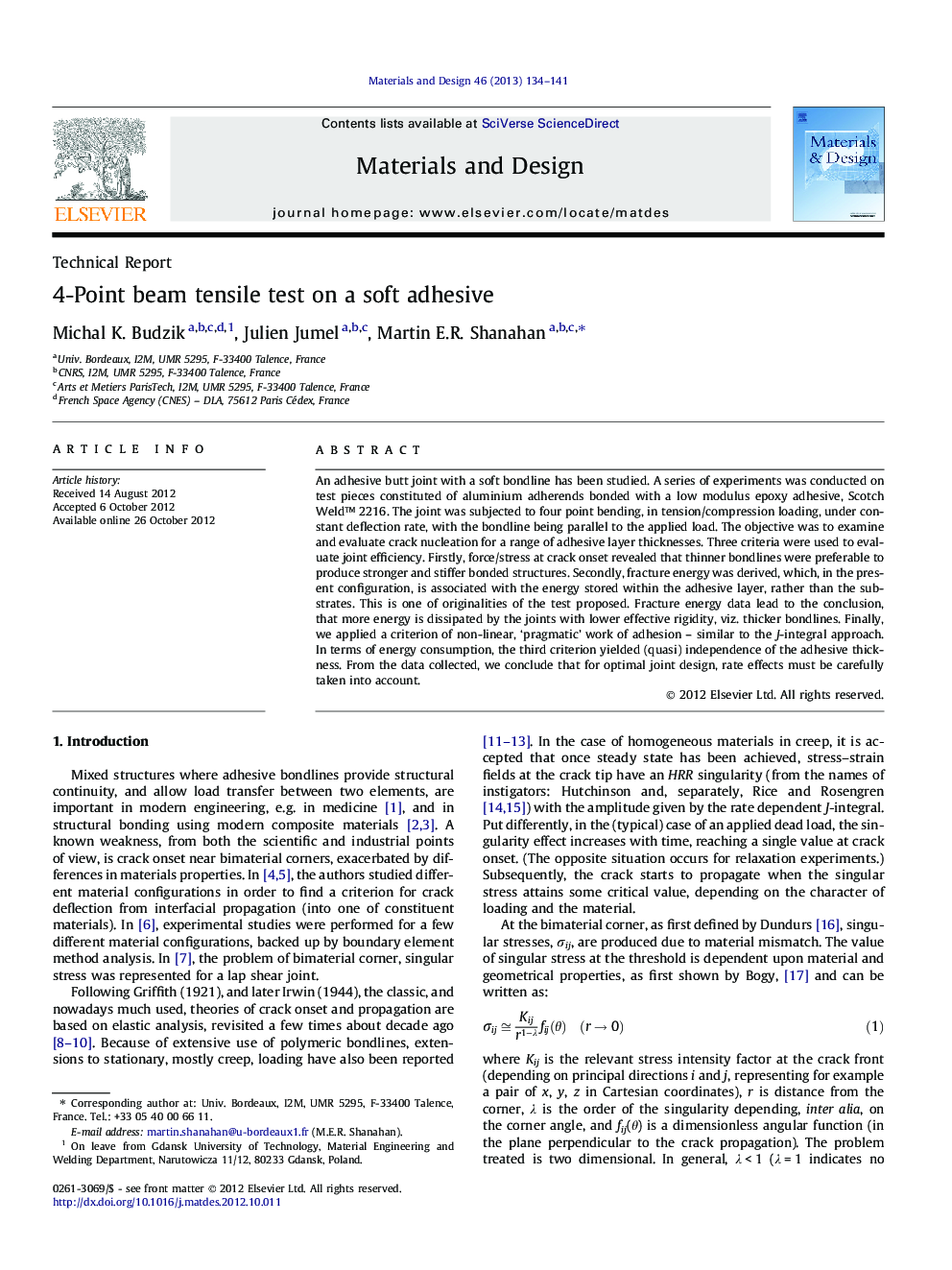| Article ID | Journal | Published Year | Pages | File Type |
|---|---|---|---|---|
| 830131 | Materials & Design (1980-2015) | 2013 | 8 Pages |
An adhesive butt joint with a soft bondline has been studied. A series of experiments was conducted on test pieces constituted of aluminium adherends bonded with a low modulus epoxy adhesive, Scotch Weld™ 2216. The joint was subjected to four point bending, in tension/compression loading, under constant deflection rate, with the bondline being parallel to the applied load. The objective was to examine and evaluate crack nucleation for a range of adhesive layer thicknesses. Three criteria were used to evaluate joint efficiency. Firstly, force/stress at crack onset revealed that thinner bondlines were preferable to produce stronger and stiffer bonded structures. Secondly, fracture energy was derived, which, in the present configuration, is associated with the energy stored within the adhesive layer, rather than the substrates. This is one of originalities of the test proposed. Fracture energy data lead to the conclusion, that more energy is dissipated by the joints with lower effective rigidity, viz. thicker bondlines. Finally, we applied a criterion of non-linear, ‘pragmatic’ work of adhesion – similar to the J-integral approach. In terms of energy consumption, the third criterion yielded (quasi) independence of the adhesive thickness. From the data collected, we conclude that for optimal joint design, rate effects must be carefully taken into account.
Graphical abstractFigure optionsDownload full-size imageDownload as PowerPoint slideHighlights► An adhesive butt joint with a soft bondline of variable thickness has been studied. ► We found that bondline thickness affects the stress state in soft bondlines. ► Fracture energy at crack onset is lowest for the thinnest of bondlines and becomes stable for thicker layers. ► Maximum stress decreases with increasing bondline thickness. ► We found that for optimal joint design, rate effects must be taken into account.
